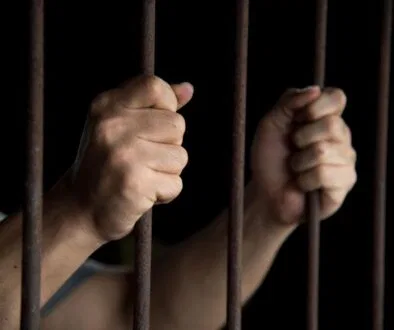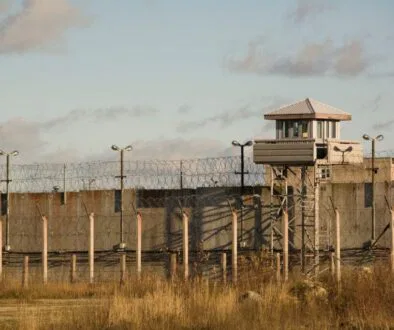10 Most Famous San Quentin Inmates and Their Stories

Published July 17, 2023
San Quentin Prison is one of the most renowned correctional facilities in the United States. If you don’t know where is San Quentin, it is located in the San Francisco Bay Area. Over the years, it has housed numerous notorious inmates who have captured the public’s attention. San Quentin has seen its fair share of infamous prisoners, from high-profile criminals to individuals involved in significant historical events.
San Quentin is home to California’s death row and gas chamber. With an estimated worth exceeding $100 million, it has gained a reputation as one of the West Coast’s most esteemed and feared correctional facilities. Let’s look into the stories of the most famous San Quentin inmates who have resided within the walls of this formidable prison.
10 Most Famous San Quentin Inmates and Their Stories
San Quentin Prison has garnered significant attention and notoriety due to its inmates, who possess notable and sometimes controversial reputations. Within its walls reside ten San Quentin famous inmates who have become household names across the United States.
1. Harvey Murray Glatman
Harvey Glatman, an American serial killer, left a haunting mark on the late 1950s. Born on December 10, 1927, Glatman exhibited troubling signs from an early age. He operated under various aliases, including George Williams. Posing as a professional photographer, Glatman enticed his victims with the promise of a modeling career.
In January 1957, Glatman embarked on a spree of terror. His modus operandi involved sexually assaulting, restraining with ropes, taking photos, and murdering his victims. Three innocent lives fell victim to his sadistic acts. However, Glatman’s crimes came to a halt in October 1958 when he was caught red-handed, attempting to kidnap a young model. A vigilant patrolman intervened and foiled his sinister plan.
During his time in custody, Harvey Glatman confessed to all three murders he had committed, leaving no doubt about his guilt. His trial followed, resulting in a death sentence. On September 18, 1959, Glatman was punished in the gas chamber at San Quentin State Prison.
2. Mack Ray Edwards
Mack Ray Edwards, born on October 17, 1918, had a dark and sinister path that unfolded over several decades. In 1942, he enlisted in the United States Army Corps of Engineers, serving as a combat engineer. Later, during the 1950s, Edwards found employment on freeway construction sites. Alongside his wife and two adopted children, he eventually settled in Los Angeles.
Between 1953 and 1956, he committed the unthinkable, sexually molesting and murdering three innocent children. Years later, in 1968 and 1969, Edwards continued his reign of terror, taking the lives of three more victims.
In 1970, Edwards collaborated with a 15-year-old male accomplice. Together, they forcibly entered the home of Edgar Cohen, where they kidnapped three sisters. Amidst the chaos, two of the girls managed to escape, prompting Edwards to release the remaining sister. Aware that his identity could be exposed by those who escaped, Edwards made the shocking decision to turn himself in at a San Fernando Valley police station on March 6, 1970.
Following his arrest, Edwards faced justice for his heinous crimes. He received a death sentence by gas chamber, leading to his transfer to San Quentin State Prison on June 11, 1970. Coincidentally, he occupied a cell adjacent to the infamous Charles Manson. However, on October 30, 1971, he died by hanging in his San Quentin prison cell.
3. Richard Trenton Chase
Chase was born on May 23, 1950. He had a reputation for starting fires, wetting the bed, and torturing animals when he was young. At the age of 21, Chase moved into his first apartment. He spent his time hunting and eating animals raw; he had no friends. After injecting himself with blood from a rabbit he slaughtered in 1976, he ended up in the hospital.
In his first murder, Chase fatally shot Ambrose Griffin in 1977. Terry Wallin, a 22-year-old pregnant woman, was his next target two weeks after the first crime. In 1978, Chase murdered Evelyn Miroth, 38, her son, 6, her nephew, 22 months old, and her friend. Chase sexually assaulted Wallin and Miroth and drank their blood. He also used the penis he severed from Miroth’s nephew as a straw. Then, he cut the boy’s body apart, ate some of the organs, and turned the rest into a smoothie.
In 1979, Chase faced trial for six counts of murder. The jury reached a verdict on May 8, 1979, finding Chase guilty of six counts of first-degree murder and sentencing him to death by execution in the gas chamber. Following his conviction, he was administered medication. Chase collected the drug, accumulating enough to take his own life. In December 1979, he was discovered deceased in his cell.
4. Scott Lee Peterson
Scott Lee Peterson was born on October 24, 1972. He grew up in a middle-class family and attended high school in San Diego. After graduating high school, Peterson attended California Polytechnic State University, where he studied agricultural business. During his time at college, he met Laci Rocha. The two began dating and eventually got married in 1997.
In 2002, tragedy struck when Laci Peterson, who was eight months pregnant, disappeared. The case garnered widespread media attention. As the investigation unfolded, Peterson’s behavior came under scrutiny. He was uncooperative, provided inconsistent statements, and had an extramarital affair with Amber Frey.
On April 13, 2003, the remains of a fetus were washed ashore. Laci Peterson’s body was found in the same area a day later. The autopsy revealed that she had been murdered. Scott Peterson was arrested on April 18, 2003, and charged with two counts of murder for the deaths of Laci and Conner Peterson, the unborn son. The trial began in 2004. In March 2005, Scott Peterson was sentenced to death by lethal injection.
5. Richard Allen Davis
Richard Allen Davis was born on June 2, 1954. Davis was frequently in trouble with the law, engaging in various offenses such as burglary, assault, and drug-related crimes. Davis would become most notorious for his involvement in a high-profile case. On October 1, 1993, in Petaluma, California, 12-year-old Polly Klaas was kidnapped from her home during a slumber party.

ADVERTISEMENT
The search for Polly Klaas lasted for two months, during which volunteers and law enforcement agencies worked tirelessly to find her. Sadly, Polly Klaas’ body was discovered on November 30, 1993, in a remote area near Cloverdale, California. She had been sexually assaulted and murdered. Davis was arrested on November 30, 1993, when Polly’s body was found.
In June 1996, Richard Allen Davis was found guilty of kidnapping, robbery, sexual assault, and first-degree murder. The jury recommended the death penalty, and in August 1996, Davis was sentenced to death. Despite ongoing appeals and legal challenges, Richard Allen Davis remains on San Quentin death row.
6. Merle Ronald Haggard
Merle Haggard was born on April 6, 1937. He grew up in a poverty-stricken family during the Great Depression and faced numerous hardships throughout his childhood. Haggard’s troubled youth led him down a path of delinquency and crime. He frequently ran away from home, engaged in petty theft, and had several encounters with the law.
While serving time in San Quentin State Prison for attempted burglary in the late 1950s, Haggard witnessed a performance by Johnny Cash. This experience profoundly impacted him and sparked his desire to pursue a music career. Haggard honed his singing, songwriting, and guitar skills while in prison.
After his release in 1960, Haggard embarked on his musical journey, drawing inspiration from his troubled past and the experiences he gained. Throughout his career, Haggard released numerous successful albums and achieved widespread acclaim for his honest and relatable songwriting. Haggard continued to tour and record music until his passing on April 6, 2016, his 79th birthday.
7. Sirhan Bishara Sirhan
Sirhan Bishara Sirhan was born on March 19, 1944. On June 5, 1968, Sirhan committed one of the most infamous acts in American history. He assassinated Senator Robert F. Kennedy at the Ambassador Hotel in Los Angeles, California, and it made him one of San Quentin famous inmates. The assassination took place during Kennedy’s presidential campaign.
After the assassination, Sirhan was quickly apprehended at the scene. During his trial, he expressed his political motivations and frustration with Kennedy’s stance on the Israeli-Palestinian conflict. He was convicted of first-degree murder in 1969 and sentenced to death. However, his sentence was later commuted to life imprisonment after the California Supreme Court invalidated the state’s death penalty statute.
Sirhan remains incarcerated and has been denied parole several times. He continues to serve his life sentence at Richard J. Donovan Correctional Facility in San Diego, California, where he was transferred in 2013.
8. William George Bonin
William George Bonin was born on January 8, 1947. Bonin had a troubled childhood and struggled with his sexual identity. In the late 1970s and early 1980s, Bonin and his accomplices Vernon Butts and Gregory Miley committed a series of heinous crimes. They targeted young men and boys. Bonin lured his victims into his van, where they were sexually assaulted, tortured, and eventually murdered.
Bonin’s killing spree ended in 1980 when he was arrested after being caught attempting to assault a young man. His arrest led to the discovery of evidence linking him to the murders. In total, Bonin was convicted of the murders of 14 young men.
In 1982, he was found guilty and was sentenced to death. On February 23, 1996, William Bonin was executed by lethal injection at San Quentin State Prison.
9. Stanley Tookie Williams III
Stanley Tookie Williams III was born on December 29, 1953. In the late 1960s, he moved to Los Angeles, where he co-founded the Crips gang with Raymond Washington. Williams’ life took a significant turn in 1979 when he was arrested and convicted for multiple murders. He was found guilty of killing four people during two separate robberies. Williams was sentenced to death and spent over two decades as one of California death row inmates.
During his time in prison, Williams underwent a personal transformation. He renounced his past involvement in gang activity and dedicated himself to promoting peace, ending gang violence, and preventing youth from entering a life of crime. He authored several books, including children’s books, that aimed to steer young people away from gangs and violence.
However, despite widespread advocacy and international attention, Williams’ requests for clemency were denied. On December 13, 2005, he was executed by lethal injection.
10. Charles Milles Manson
Charles Milles Manson was born on November 12, 1934. Manson had a troubled childhood and a history of criminal activity. He spent most of his life in and out of correctional facilities for various offenses. In the late 1960s, Manson formed a cult known as the Manson Family. Manson convinced his followers to commit violent acts.
On August 8-9, 1969, Manson instructed his followers to carry out a series of brutal murders. Four members of the Manson Family, under Manson’s guidance, broke into the home of actress Sharon Tate and murdered her and four others who were present at the time. The following night, Manson and his followers brutally killed Leno and Rosemary LaBianca in their Los Angeles home.
In 1971, Manson and four of his followers were found guilty of multiple counts of murder and conspiracy to commit murder. Manson was not present during the killings but was held responsible for directing his followers to carry out the crimes. The convicted Manson Family members were initially sentenced to death, but their sentences were commuted to life imprisonment when California temporarily abolished the death penalty in 1972.
Wrapping Up
The stories of the most famous San Quentin inmates are both captivating and tragic. Each inmate had their own unique story and reasons for ending up in San Quentin. Despite their notoriety, it is important to remember that each of these inmates is a human being with their own struggles and hardships.
Reduce Your Jail Call Costs By Up To 90% Per Minute With GlobalTel
GlobalTel’s inmate calling service lowers jail call per minute rates by up to 90% for jail calls from US facilities. Sign up now and use the special jail call phone number we create for you to eliminate the long distance jail call fees. Try GlobalTel for only $45.99 for 90 days. Make US/domestic and international jail calls at the local rate and stay connected to your incarcerated loved ones for less. Learn more about how to sign up for calls from inmates here.

This Content Is Fact Checked
Our esteemed team of specialists has thoroughly validated the accuracy of this information. Discover further details about the rigorous editorial guidelines for our website here.
ADVERTISEMENT

About The Author
Krizzia Paolyn is an SEO Specialist with a bachelor’s degree in Psychology. It has always been her passion to share her voice, and at the same time, to encourage other people to speak up.




